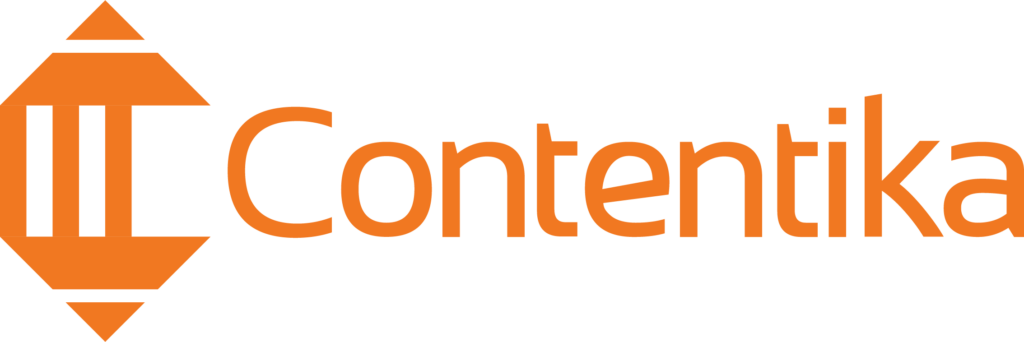15 Most Innovative User-Generated Content Examples

This article reveals the 15 most innovative examples of user-generated content, featuring examples from some of the world’s most popular brands.
The Ultimate Guide to a Successful SEO Content Marketing Strategy [+Free Template]
Looking to drive website traffic and conversions through SEO? This blog post provides a comprehensive content marketing and SEO strategy for doing just that.
A Comprehensive Guide to Creating a Killer Content Plan
Wondering how to create a killer content plan to help you achieve your marketing goals and stand out from the competition? Find out here!
What You Need to Know About Brand Content Marketing

You’ve heard of “branded content marketing,” but do you understand it? Branded content marketing helps companies create engaging articles, videos, and more. Here’s all you need to know.
20 Surprising Benefits of Content Marketing: How It Can Transform Your Business

Content marketing can increase traffic, leads, and customers. In this article, You’ll learn about the benefits of content marketing and how it can help your business.
Complete Guide to Social Media Marketing for Small Businesses
Learn how to use social media marketing to grow your small business using social media strategy that will help increase brand awareness, and boost website traffic.
How to Attract, Engage, and Convert Customers: Content Strategy 101

Here’s a comprehensive guide on how you can create a content marketing strategy that attracts customers, increases engagement and conversion rates, and helps build your brand.
Blog SEO: Everything You Need to Optimize Your Blog Posts
If you do not optimize your site for search engines, you’re missing out on a lot of potential traffic and revenue. Click here to learn about blog SEO.
What is Content Operations and Why Should You Care?

Here’s a quick question. How do blockbuster movies get to make it to the big screens? Was it because there was a great story that someone wanted to share? Or, was it through the combination of great actors, cameramen, and directors who had the required skills to bring the story to life? Or perhaps, it was through the big movie studio that had the means to produce and distribute the movie? As you can probably guess, the answer is all of the above and more. Importantly, it was through a combination of processes and people working together efficiently to make sure the final product was delivered on time and met the required standards. This demonstrates that to get a story from the screenwriter’s brain onto the big screen, a lot of people and a lot of work have to come together behind the scenes. Pun intended! The same can be said of the content that appears on your website or blog. There’s a lot more that goes into getting that content onto your site or social media platform than just having a great idea and creating an awesome piece of content. To get that content onto your site, have it look the way you want, and have your audience interact with it, a lot of people and a lot of work have to come together. This process, dear reader, is what is called content operations. Content operation is the process of creating, managing, and delivering content. It includes everything from planning and creating content to publishing and distributing it. In other words, it’s the process that takes your content from idea to reality. And just like movie operations, content operations require a team of people with different skills and knowledge working together to get the job done. This post discusses content operation, its benefits, components, and how to implement it. Components of Content Operations Any organization’s content operations revolve around 3 main pillars: people, processes, and technology. People People are the most important pillar of content operation and can be likened to its heart for several reasons. First, people create content. Content does not write itself- people have to come up with ideas and put them into words (or other formats). Second, people edit and publish content. Even if someone else writes the initial draft, someone else will have to review it and make sure it is accurate and meets any required standards. And finally, someone has to decide how to manage and distribute the content. There are many different ways to do this, and the right choice depends on the specific needs of the organization. The bottom line is that people are essential to the content operation. Without them, there would be no pieces of content to manage or distribute! Content operation can depend on a wide range of professionals ranging from content creators and editors to graphics & web designers, SEO specialists, and project managers. Each person has a different role to play and each plays an important part in making sure your content is created, managed, and delivered effectively. Process If people are the heartbeat of content operation, then the process is the system that keeps it working and in good health. Process involves several different activities, including creating editorial calendars, developing style guides, and establishing workflow procedures. A well-designed content process will also take into account the different stages of the content lifecycle, from ideation to publishing to post-publication promotion. It will also clearly define the roles and responsibilities of each team member, ensuring that everyone knows what they need to do to keep the process running smoothly. Furthermore, having a structured process ensures that content is produced in a timely and consistent manner and that it meets the needs of both the organization and its audience. A typical process in content operation would be as follows: Technology The third and final pillar of content operations is technology. Technology plays a vital role in content management and distribution, and the right tools can make all the difference in ensuring that your content is seen by the right people at the right time. Some of the most common tools used in content operations include: Project Management & Scheduling Tools From start to finish, project management and scheduling tools play an important role in content operations. By keeping track of deadlines, assigning tasks, and monitoring progress, these tools keep team members aware of their responsibilities and help ensure that projects stay on schedule. In addition, project management tools can help to identify potential bottlenecks and risks, allowing teams to take proactive steps to avoid problems. And when problems do arise, scheduling tools can be used to quickly reschedule work and keep the overall project on track. Examples of these tools include: Content Execution Tools Content execution tools are the tools your team uses in creating the content type that is being published. This can be anything from a word processor for creating blog posts to design software for creating infographics to video or image editing software. From writing and editing to design and layout, content execution tools are used at every stage of the content creation process. And with the ever-growing list of options available, there is sure to be a tool that meets your specific needs. Some of the most popular content execution tools include: Analytics & Reports Tools that provide data and insights into how your content is performing are essential for content operations. By understanding what content is popular with your audience, you can adjust your strategy accordingly and ensure that your time and resources are being spent on the right things. Additionally, analytics tools can help identify any potential problems with your content or distribution channels so that you can take corrective action. Some of the most popular analytics and reporting tools include: Inventory/Asset Management System An inventory management system is a tool that helps content teams keep track of all their content assets in one central location. This can be anything from
Content Curation: Tools, Techniques, and Tips for Maximal Efficiency

As a content marketer, it’s easy to feel overwhelmed when it comes to content. With so much information out there, how can you ensure that you’re curating only the best and most relevant material for your audience? The fluffs and pompous jargon should be left behind, and instead, focus on crafting meaningful content that adds real value to your target audience. To aid in this process, having a set of tools and techniques at your disposal is helpful. In this blog post, we’ll walk you through all the essentials for efficient content curation, including some of the best tools for content curation. You’ll also get insider tips for maximizing efficiency and streamlining your workflow in the content curation process. What is Content Curation? Content curation is discovering, organizing, and sharing relevant and valuable content with a specific audience. You find the most impactful and valuable information within a particular niche or topic, then present it in a cohesive way for your target audience. In the same way a chef carefully selects the ingredients for a dish, content curation involves hand-picking and organizing relevant information and resources for your audience. It’s not just about gathering any random content; it’s about selecting only high-quality, valuable material that adds value to your brand’s narrative. A critical aspect of content curation is adding your unique spin or perspective on the material – it’s not just about reposting and regurgitating information but adding your own insights and value to the content. It follows the proverb that “good artists borrow, great artists steal” – curating content involves borrowing ideas and insights from various sources, then turning it into something new and original. Like many people, don’t make the common mistake of thinking that content curation is the same as content creation. That would be a fallacy. Content curation is the process of finding, organizing, and sharing useful information with your audience. But content creation involves developing original content from scratch – it’s not just about gathering and sharing material but creating your own unique or fresh content ideas and materials. Both are essential aspects of a successful digital marketing strategy. Best Practices for Content Curation To curate content that truly adds value for your audience and not just a run-of-the-mill collection of content, there are specific tips and techniques that will help guide your process. Not only will these tips make your content curation more effective, but they’ll give you an edge over those sharing mediocre content. Set Clear Goals and Objectives No content marketer ventures into content curation without a purpose. Take the time to define your goals and objectives clearly. In other words, before diving into finding content, have a clear idea of what you want to achieve with your curation. Your goals must be SMART – specific, measurable, attainable, relevant, and time-bound. This will help guide your content curation process and ensure that the content you share Keep Your Audience in Mind When curating content, always keep your audience in mind. Focus on sharing content that will genuinely add value for them and address their pain points or interests. You need to understand your audience. Know their interest and pain points and then curate content that they will find valuable. Importantly, stay up to date on industry developments and trends. This will help guide your content curation process and ensure that the content you share is relevant and helpful. Choose Quality Over Quantity Getting caught up in the quantity game regarding content curation is easy. But remember, it’s better to share a few high-quality pieces of content than a long list of mediocre ones. Take the time to carefully evaluate each piece before sharing it with your audience. Consider things like relevancy, accuracy, and uniqueness. You can also add your insights or commentary on the content to provide added value for your audience. Share a Variety of Content Types To keep your audience engaged, mix up the type of content you share. This can include blog posts, infographics, videos, podcasts, and more. In addition, make sure to curate content from various sources – not just the big players in your industry. This will add diversity and fresh perspectives to your content curation. Have a Scheduled Time for Content Curation Just like it is with posting your content, consistency is key for curation as well. Set aside a specific week or time to search for and evaluate potential content to share. This will ensure that you consistently provide valuable content for your audience without letting it fall by the wayside. Promote Your Content Your content should also be a part of your curated content mix. This is an excellent opportunity to promote and drive traffic back to your own content and establish yourself as a thought leader with remarkable industry expertise. Just make sure not to do everything right. The focus should still be on providing valuable content from a variety of sources, including your own. Regularly Review Your Performance Regularly review the performance of your content curation efforts. Use analytics and metrics to determine what resonates with your audience and what isn’t. This will allow you to make any necessary adjustments and improve your content curation strategy moving forward. Add Your Own Commentary or Insights Incorporating your insights or commentary on the content can add value for your audience and position you as a thought leader in your industry. Offer your unique perspective on the curated content – add in your thoughts or analysis to add value for your audience. This can also help differentiate your curated content from the rest and make it more memorable. But keep it simple – the focus should still be on sharing valuable content from a variety of sources. Use a Content Curation Tool There are various tools available to make the content curation process easier. This can include social media scheduling and management tools and curated content discovery platforms. Using a tool can streamline the curation process and save you time in the long run.


